Green architecture – Mill Valley Cabins
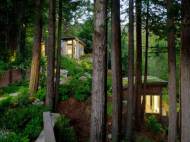 Green roofs date back to the ancient times where they were used to provide additional insulation or to amaze visitors and provide more tranquil surroundings. We already wrote a fair share of articles about architectural solutions that are partially or fully covered with green roofs, however, the Mill Valley Cabins deserved their spot among these projects because they were designed in a way that takes the full advantage of their setting.
Green roofs date back to the ancient times where they were used to provide additional insulation or to amaze visitors and provide more tranquil surroundings. We already wrote a fair share of articles about architectural solutions that are partially or fully covered with green roofs, however, the Mill Valley Cabins deserved their spot among these projects because they were designed in a way that takes the full advantage of their setting.
Designed by Feldman Architecture, the 47 square-meter (500 square-foot) upper cabin and the 35 square-meter (380 square-foot) lower cabin represent accessory structures to the owners’ existing hillside home. The clients plan to use them as space for an artist studio and a yoga space that can easily be transformed into a private guest cabin when needed.
The architect opted for minimal re-grading of the area by choosing the natural gaps between trees to select locations for the cabins and made them blend into their surrounding greenery by making an understated but warm design of the exterior, while the interior of the cabins emanates with light and warmth. Located on a southeast-facing slope, the cabins receive the sun’s first rays in the morning.
The orientation of the two cabins captures different views, and the roof of the lower cabin, which serves as a private yoga studio, was planted with a garden since the upper cabin would look down on it and the client and design team wanted the building to blend into the hillside. The lower cabin has the entire south wall opened to the hillside, embracing the trees and sunshine.
Inspired by Mill Valley’s Mount Tamalpais, landscape architect Jori Hook used native and site-specific plants in the landscaping. Aside making the vegetation reflect the flora of the mountain, the selection of those plants ensure easier maintenance.
Although the slope where the cabins are situated has a 20-foot grade change, neither the designers nor the homeowners wanted to perform extensive grading of the site. Since the clients expressed their love for gardening, the roof of the lower cabin (the yoga studio) served as a perfect additional surface that was converted into a garden.
Despite the fact that Mill Valley Cabins do not feature many sustainable living solutions we described in our previous articles about green architecture, their spot in our green architecture series is justified due to the solutions that minimized the impact of the project onto the surroundings and providing the area for green surface on a steep terrain.
I’m glad that the use of green roofs is trending again, whether being used in new projects or in retrofits of existing buildings. Aside providing additional insulation and green spaces, green roofs lower the heat island effect and provide a natural solution to lower carbon dioxide in urban environments by storing it into the plants grown on those surfaces.

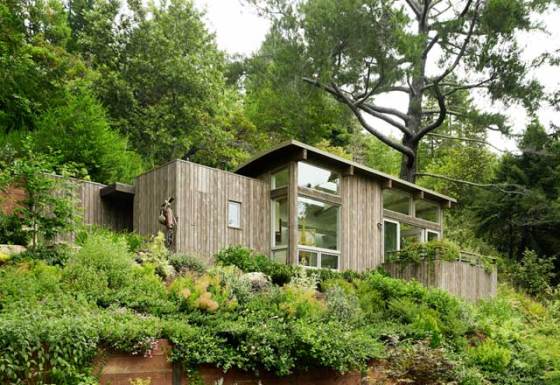
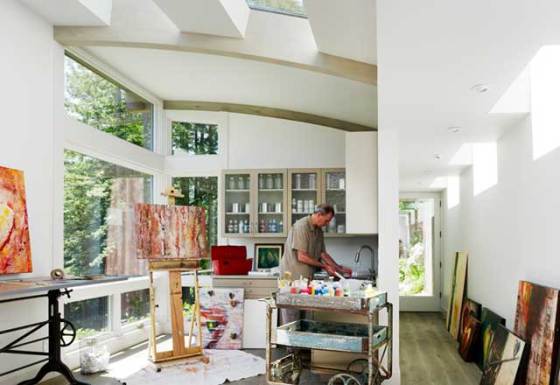
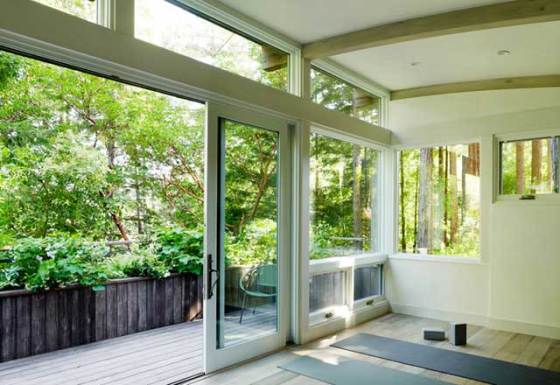
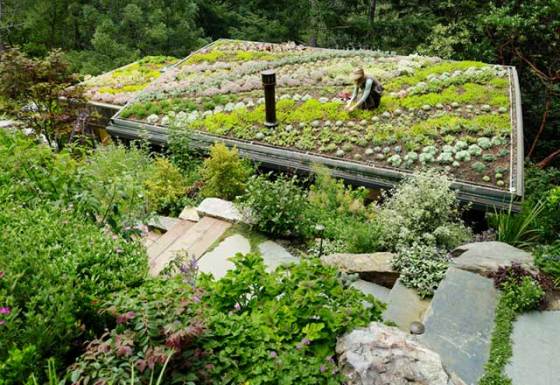
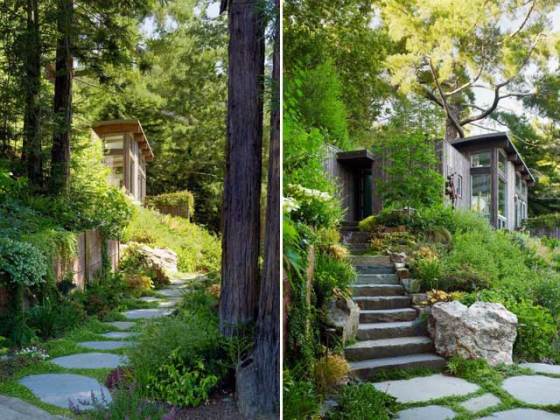
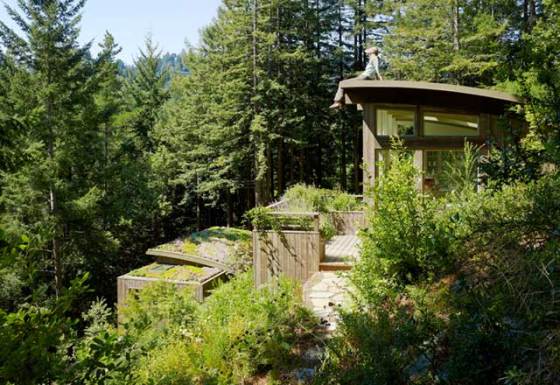








Leave your response!